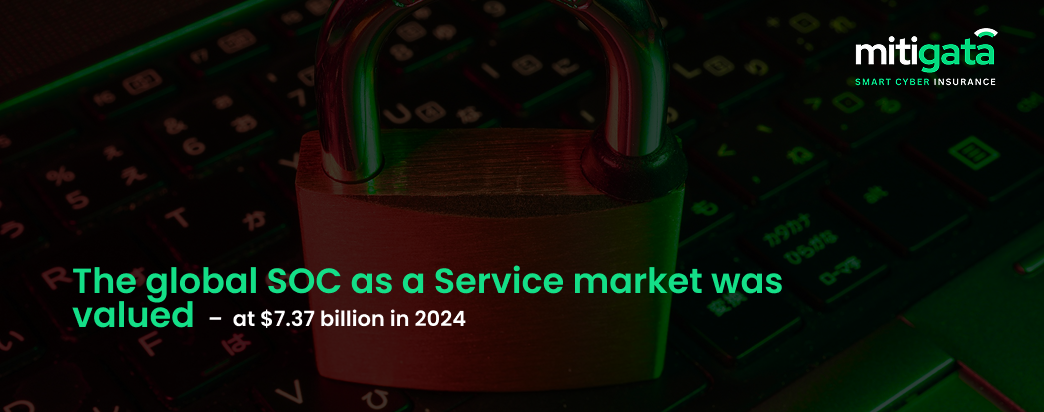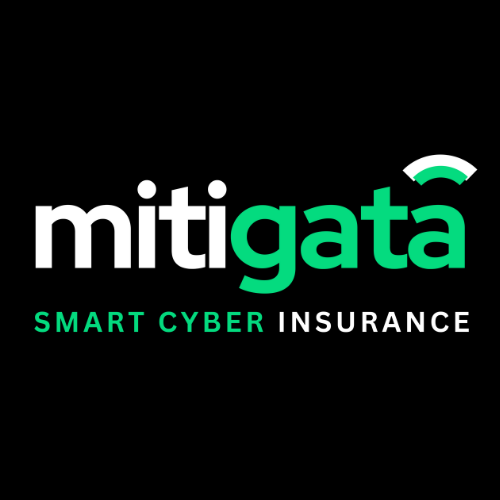Security Operations Centre (SOC)- What you should know in 2025?
Every day, we see businesses facing a variety of risks, including malware attacks, phishing scams, and AI-powered cyberattacks.
Undoubtedly, hackers are becoming smarter with modern technologies to exploit flaws and steal valuable data.
Today, traditional security solutions are no longer sufficient to keep up with the evolving cybercrimes.
This is where a Security Operations Centre (SOC) comes in. As cybersecurity becomes more complex, many companies are turning to solutions like SOC-as-a-Service to strengthen their defenses.

The global SOC-as-a-Service market was valued at $7.37 billion in 2024 and is projected to reach $14.66 billion by 2030. This indicates a significant shift toward outsourced security management.
A recent survey showed that over 75% of organisations detect incidents with SOC faster, often before external alerts even trigger.
This change highlights how companies are moving from reacting to threats to actively seeking them out.
In this blog, we’ll cover everything you need to know about a Security Operations Center (SOC). We’ll explain what SOCs are, the importance and challenges of SOCs and the tools that SOCs use to protect your business.
What is a Security Operations Center (SOC)?
A Security Operations Center (SOC) is a dedicated team that monitors and protects an organisation’s IT infrastructure from cyberattacks. These could include malware, phishing attempts, or any other unusual activity. Whether in-house or outsourced, the SOC team uses advanced SOC tools to detect and respond to attacks in real time.
Simply put, the SOC in cybersecurity means a central hub where cyber professionals work around the clock to monitor systems, identify threats, and ensure overall system security.
And the good news?
With the rise of SOC-as-a-Service, businesses no longer have to start from scratch. Instead, they can outsource their security operations to specialist suppliers, providing continuous monitoring and competence without bearing the costs of an in-house workforce.
Why Build SOC From Scratch. Don’t Build, Partner With One.
Mitigata gives you full-scale 24/7 protection — faster, smarter, and more affordable.

SOC Tools: The Backbone of Effective Cybersecurity Operations
A security operation center (SOC) is only as effective as its tools. The right SOC tools can make the difference between discovering an attack before it does damage and responding too late.
Some of the most common tools used in a Security Operations Center (SOC) include Security Information and Event Management (SIEM), Endpoint Detection and Response (EDR), User and entity behaviour Analytics (UEBA) and Data Loss Prevention (DLP).
Challenges of Security Operations Centers (SOC)
By far, you must have discovered why having the right SOC is essential in defending against cyber threats.
However, managing a SOC comes with a set of challenges:
- It’s Expensive: Setting up all SOC tools and running an in-house SOC team can cost up to ₹8.5 crore a year. This is very costly for many small businesses. That’s why companies are turning to SOC-as-a-Service, as it is more affordable.
- Cyber Talent Is Hard to Find: There’s a global shortage of cybersecurity professionals — around 3.5 million unfilled roles. Finding experienced SOC analysts is a struggle, which often leaves teams understaffed.
- 24/7 Threats Need 24/7 Monitoring: Cyber attacks don’t clock out at 5pm. Keeping a SOC running around the clock means multiple shifts, which can lead to staff burnout — or worse, missed threats.
- Alert Overload: SOC generates numerous alerts daily, with 95% of them being false alarms. If not managed properly, the real threat can go undetected.
- Not Enough AI in Use: Many SOCs still rely on outdated methods. AI and generative AI are not being used to their full potential, which slows down response times and increases manual workload.
- Geopolitical Tensions: Geopolitical conflicts create more cross-border cyberattacks. SOCs need to be prepared to handle unpredictable threats from anywhere in the world.
If you’re looking for SOC compliance as well. Here’s our 2025 quick guide for you.
Why Mitigata should be your Top-notch Priority
When it comes to protecting your business, having the right security infrastructure is crucial.
At Mitigata, we offer SOC-as-a-Service to businesses of all sizes, providing top-tier protection without the need for a costly in-house team. Our SOC security services provide you with the expertise and tools necessary to stay ahead of cyber threats.
Here’s why Mitigata should be your top choice:
- 24/7 Coverage: We have a team of defense-grade certified professionals for monitoring your systems, ensuring constant vigilance against cyber threats, day or night.
- Advanced Threat Detection: We utilize AI-powered threat detection, GenAI capabilities, and advanced threat intelligence to detect and respond to threats more quickly and efficiently.
- Incident Response: Our incident management protocols give alerts when a threat is detected. Then, our team takes immediate action to minimize the impact and maintain business continuity.
- Comprehensive Security Tools: We use the latest tools like SIEM, EDR, XDR, firewall, UEBA, and DLP to protect your business across all points of vulnerability.
- Customizable Security Solutions: Our SOAR (Security Orchestration, Automation, and Response) and native case management features provide security solutions tailored to your business needs.
- Cost-Effective: Save 50% compared to expensive in-house security teams. Here, we provide access to top-tier professionals and modern tools, without the high cost of maintaining an internal team.
- Faster Response Times: Our AI and ML-powered capabilities enable you to save up to 90% of your time by identifying and neutralizing threats in real-time.
- Regular Reporting: You’ll receive regular reports on threat detection, response actions, and overall security status, giving you transparency and peace of mind.
Why wait? Contact our team now and get high-quality, continuous protection for your business.
SOC That Doesn’t Miss a Breach
800+ companies trust us to run their cybersecurity with our All-in-one SOC offering real-time monitoring and easy integration.

Importance of SOC for Businesses in 2025
As we step into 2025, the cybersecurity landscape is evolving fast and so are the threats.
Take the April 2025 case of Marks & Spencer (M&S), where the UK retail giant was hit by a major ransomware attack carried out by the DragonForce group. Their online services went down, and the breach is estimated to have cost £300 million. It’s a harsh reminder that even well-established brands aren’t safe.
And it’s not just M&S. According to IBM’s 2024 Data Breach Report, the global average cost of a data breach has now become $4.88 million — the highest it’s ever been.
Conclusion
As businesses grow and adopt emerging technologies such as artificial intelligence (AI), the need to protect digital assets becomes more essential than ever. A business’s Security Operations Center (SOC) functions as a first line of defense against cyber threats.
Whether you develop your own team or work with a trusted SOC-as-a-Service provider, having a dedicated security team gives you a big advantage. With advanced tools such as SIEM, EDR, and XDR, your SOC can detect threats early and shut them down before they cause severe damage.
Frequently asked Questions and answers on SOC
Q1. What is the concept of SOC?
A Security Operations Center (SOC) is a centralized unit that monitors and defends an organisation’s IT infrastructure against cyber threats. It consists of a team of cybersecurity experts who are responsible for detecting, analyzing, and responding to security incidents in real-time. The SOC uses advanced tools like SIEM, EDR, and XDR to monitor systems, networks, and applications.
Q2. What is a SOC service?
A SOC service refers to outsourced security operations provided by specialized companies to help businesses detect and respond to cybersecurity threats. These services, often offered as SOC-as-a-Service, provide 24/7 monitoring and management of security tools, ensuring organizations have constant protection without the need for in-house teams.
Q3. Who uses SOC?
SOC services are used by organizations of all sizes across various industries that need to protect their digital assets. From small startups to large enterprises, SOC-as-a-Service is becoming increasingly popular, as it provides 24/7 monitoring and expert support without the need to build an in-house team.
Q4. What is an example of a SOC?
An example of a SOC is a large e-commerce business may employ a dedicated SOC team to oversee its network traffic, detect potential threats, and respond to incidents. Alternatively, businesses can use SOC-as-a-Service providers like Mitigata to have access to expert security operations and state-of-the-art tools without maintaining their own team.
Q5. What is a SOC tool?
A SOC tool refers to the software and systems used by Security Operations Centers to monitor, analyze, and respond to security incidents. Key SOC tools include SIEM (Security Information and Event Management), EDR (Endpoint Detection and Response), XDR (Extended Detection and Response), and DLP (Data Loss Prevention).
Q6. What is a SOC service?
A SOC service is a managed security offering where an external provider takes responsibility for monitoring, detecting, and responding to cyber threats on behalf of an organization. These services are essential for businesses that lack the resources or expertise to build their own Security Operations Center. SOC-as-a-Service providers offer continuous protection by leveraging advanced tools such as SIEM, XDR, and EDR to ensure real-time threat detection and proactive defense.
Q7. What are the three types of SOC?
The three main types of Security Operations Centers (SOCs) are in-house SOC, hybrid SOC, and outsourced SOC (SOC-as-a-Service). An in-house SOC is managed internally, offering full control but requiring more resources. A hybrid SOC combines in-house and outsourced services for flexibility, while SOC-as-a-Service is fully outsourced, providing scalable, cost-effective security monitoring without the need for an in-house team.

